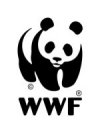Zambia designates portion of Lake Tanganyika

The new "Tanganyika" Ramsar site (230,000 hectares, 08°31'S 030°53'E), effective World Wetlands Day 2007, includes the Zambian part of Lake Tanganyika, Africa's deepest and longest lake, shared by Zambia, Tanzania, Burundi and the Democratic Republic of Congo, as well as shoreline areas of Nsumbu National Park and Kaputa GMA. As described by Evelyn Parh Moloko based on the Ramsar Information Sheet, the Zambian shoreline (about 238km) is steep and rocky, with some areas of shallow swampy land and limited stretches of sandy beaches. The site has a rich diversity of vegetation including riverine forest, woodland, thickets, shrub and grassland and hosts the African elephant, lion, wild dog, and endemic reptiles like the Lake Tanganyika Water Snake (Lycodonomorphus bicolor) and Water Cobra (Boulengerina annulata). The Zambian part of the lake hosts over 252 fish species, 82 of which are endemic (e.g., Neolamprologus brichardi and Altolamprologus compressicep). The main inhabitants (Tabwa and Lungu peoples) practice artisanal fishing for a living but also trade forest products (grass, fuel wood and timber wood). The lake holds historical landmarks such as ruins of early missionary churches and some early Stone Age sites near the Kalambo Falls. A management plan has been finalized for the NP with UNDP assistance, aimed at decreasing poaching levels, ensuring proper  waste disposal, restorating degraded habitats, and ensuring implementation of EIAs and land use plans for all development projects in the park, and will soon be implemented. There are plans to formulate a transnational fisheries management plan.
waste disposal, restorating degraded habitats, and ensuring implementation of EIAs and land use plans for all development projects in the park, and will soon be implemented. There are plans to formulate a transnational fisheries management plan.
As with the four Zambian designations previously announced, the WWF Global Freshwater Programme and WWF-Zambia were extremely helpful to the government of Zambia in the preparation of the data for these new designations and site extensions. [20/04/07]